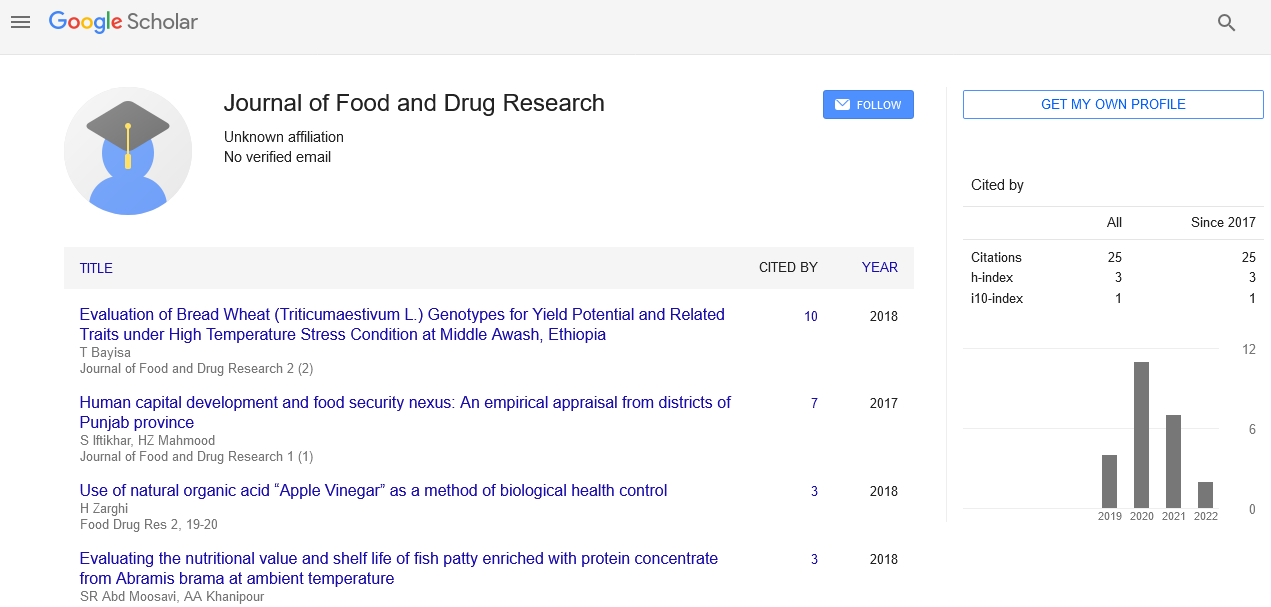
Sign up for email alert when new content gets added: Sign up
Abstract
Effect of pulsed light treatment on the quality attributes of pineapple based mixed fruit beverage
Author(s): Snehasis ChakrabortyStatement of the Problem: Consumer demand for minimally processed tropical fruit juice induces the possibilities of exploring nonthermal processes for the same. Pulsed Light (PL) or high-intensity PL treatment is one of the emerging nonthermal techniques, which is gaining interest to the industry as it produces a microbially safe food product without or minimally affecting its phytochemicals and nutrient profile. The study aimed to explore the efficacy of pulsed light treatment on different microbial, enzymatic and biochemical properties of a mixed tropical fruit beverage followed by comparing the same with thermally treated one. Methodology: The study explores the influence of Pulsed Light (PL) treatment on quality attributes of pineapple-amla based mixed fruit beverage within 1.8-2.4 kV/30-120 s/7.1-9.1 J•cm-2 per pulse (pulse-width 360 μs, 3 pulses per second). The quality attributes analyzed were color change (ΔE*), antioxidant capacity, total phenolic profile, ascorbic acid, peroxidase and polyphenol oxidase activity, Aerobic Mesophilic Count (AMC), Yeast and Mold Count (YMC). Findings: Both PL and thermal treatment have significantly reduced microbial load and enzyme activity in the beverage and especially 5D reductions was achieved for both thermal and PL treatment in terms of Aerobic Mesophiles (AM) and Yeast and Molds (YM). PL has shown an improved retention of colour and Ascorbic Acid (AA) as compared to thermal treatments. Opposite to thermal processing an increase in phenolic content and antioxidant capacity was observed after PL treatment. Impact of thermal degradation of microorganisms, enzymes, AA and loss of visual status (colour profile) were much greater than PL treatment. In case of both PL and thermal treatment PolyPhenol Oxidase (PPO) enzyme and microbial group of YM were the most resistive, along with AA as the most sensitive bioactive nutrient. The study established the potential of PL treatment as an excellent alternative to thermal pasteurization of beverages.





